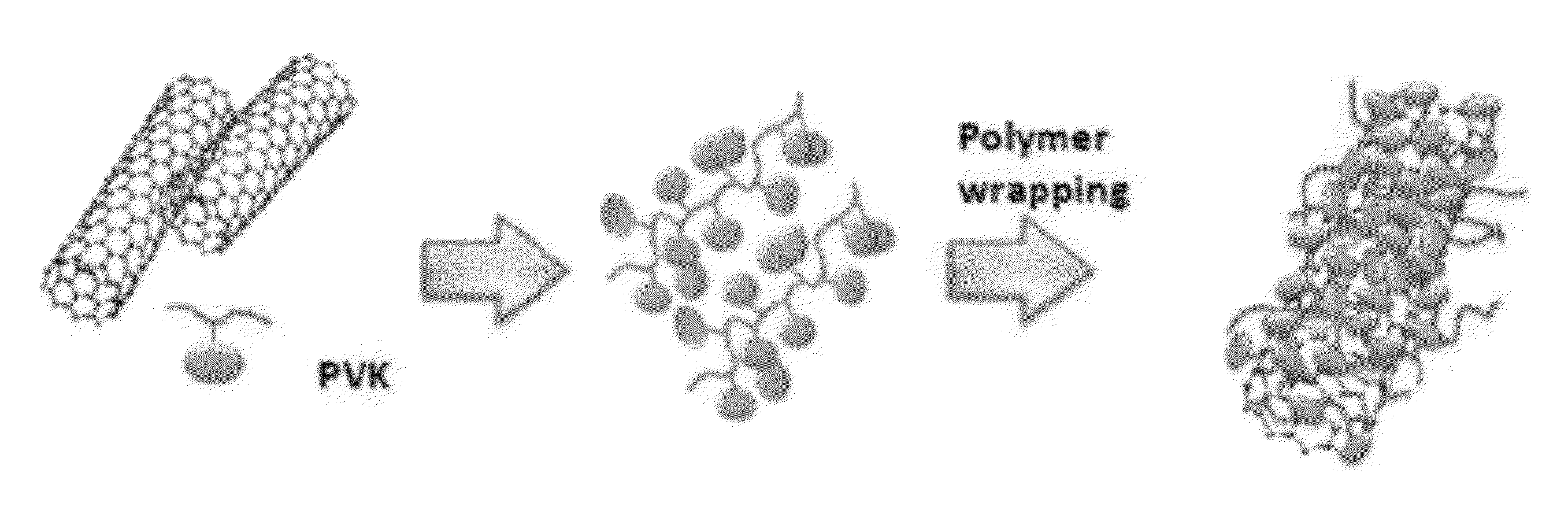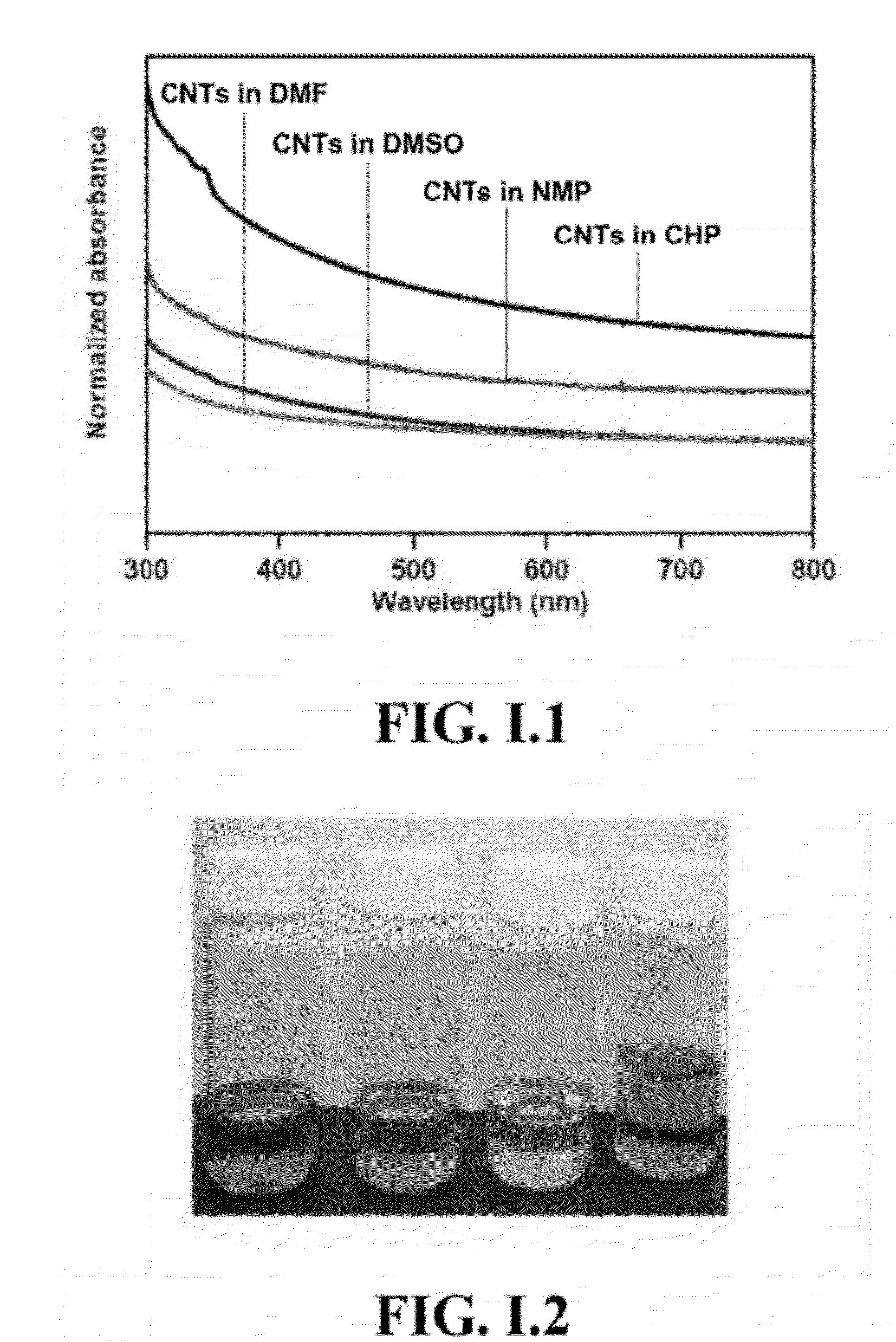Polymer nanocomposite precursors with carbon nanotubes and/or graphene and related thin films and patterning
a technology of carbon nanotubes and graphene, which is applied in the direction of mechanical vibration separation, separation process, non-metal conductors, etc., can solve the problems of reduced yield, inability to completely remove oxygen functionalities, and inability to know adequate processes, so as to increase the exfoliation of graphite materials and increase yield
- Summary
- Abstract
- Description
- Claims
- Application Information
AI Technical Summary
Benefits of technology
Problems solved by technology
Method used
Image
Examples
Embodiment Construction
of the Invention
[0144]Embodiments of this invention broadly relate to nano-composites including a graphite material and a polymer including sufficient π-conjugated moieties to interact with surfaces of the graphite material to form a graphite material partially or completely coated with the polymer, and broadly relate to methods for making nano-composites and using the nano-composites.
[0145]Embodiments of this invention broadly relate to nano-composite solutions and / or dispersions including graphite material having a partial or complete coating of a polymer including sufficient π-conjugated moieties to interact with surfaces of the graphite material. In certain embodiments, the polymer further includes electropolymerizable moieties, reductively polymerizable moieties, and / or oxidatively polymerizable moieties.
[0146]Embodiments of this invention broadly relate to films comprising nano-composites including a polymer coated graphite material, where the polymer including sufficient π-co...
PUM
| Property | Measurement | Unit |
|---|---|---|
| height | aaaaa | aaaaa |
| density | aaaaa | aaaaa |
| widths | aaaaa | aaaaa |
Abstract
Description
Claims
Application Information
 Login to View More
Login to View More - R&D
- Intellectual Property
- Life Sciences
- Materials
- Tech Scout
- Unparalleled Data Quality
- Higher Quality Content
- 60% Fewer Hallucinations
Browse by: Latest US Patents, China's latest patents, Technical Efficacy Thesaurus, Application Domain, Technology Topic, Popular Technical Reports.
© 2025 PatSnap. All rights reserved.Legal|Privacy policy|Modern Slavery Act Transparency Statement|Sitemap|About US| Contact US: help@patsnap.com



